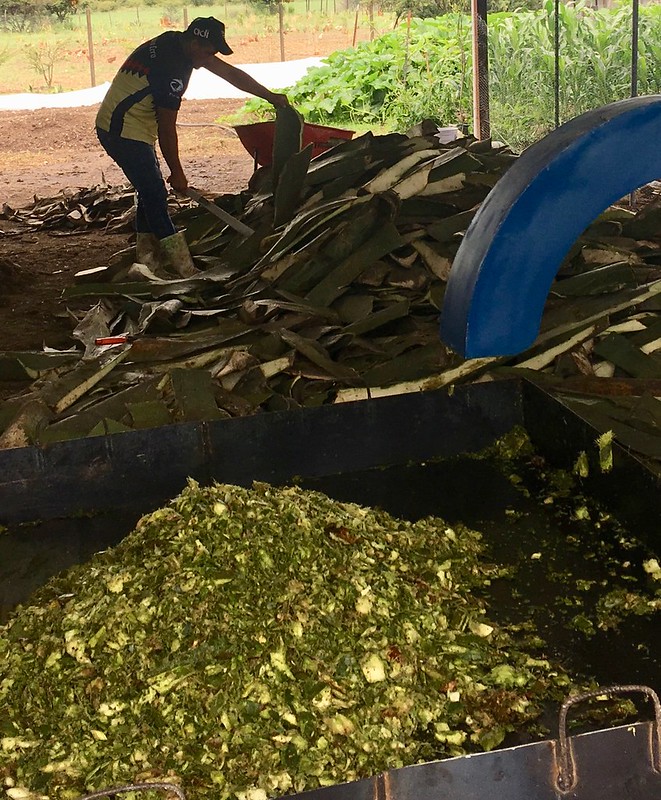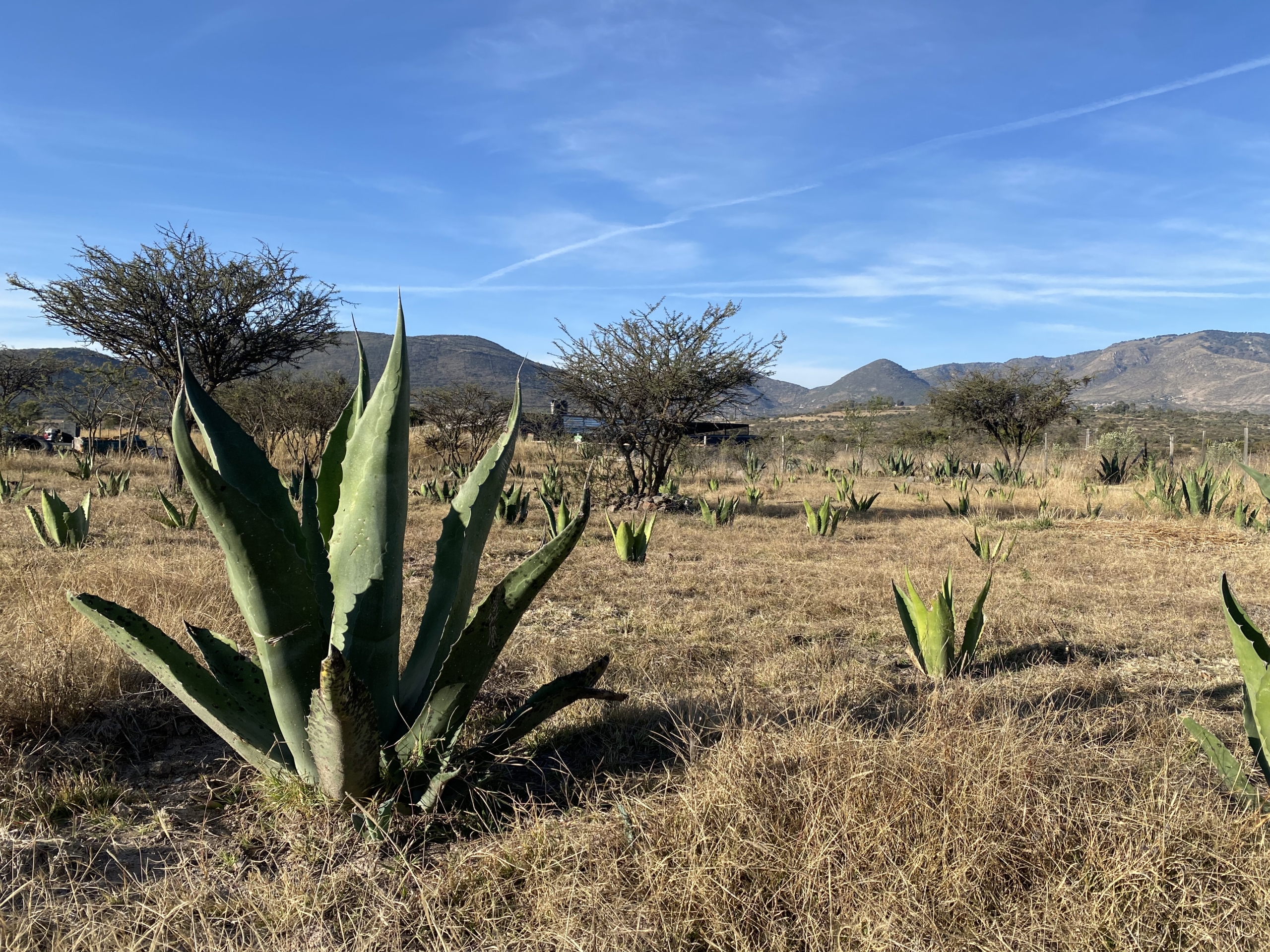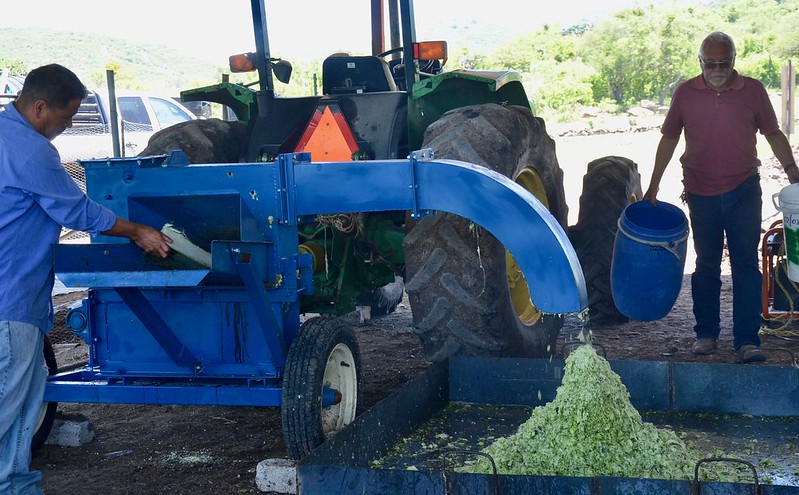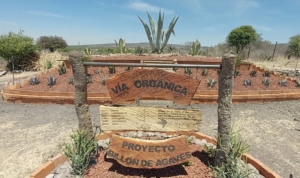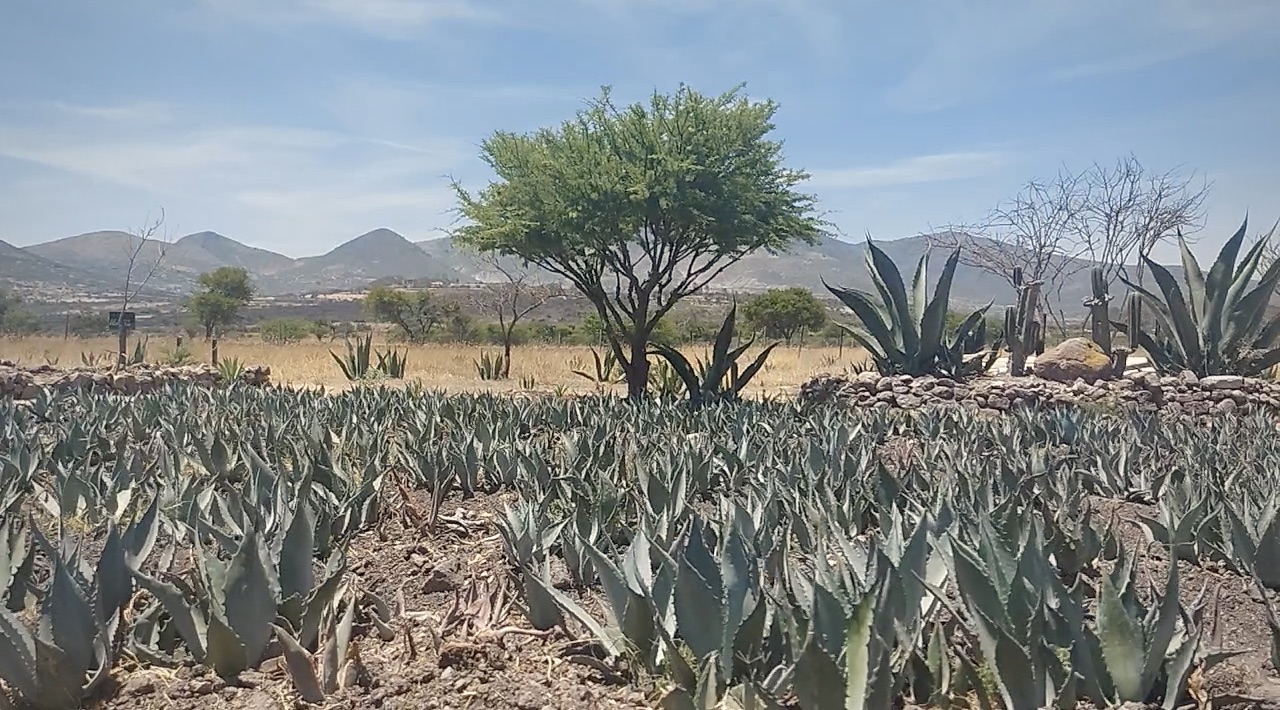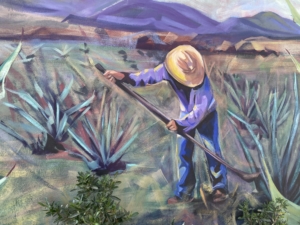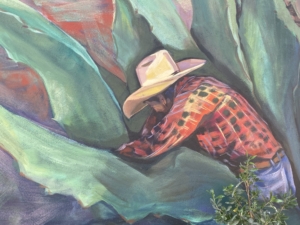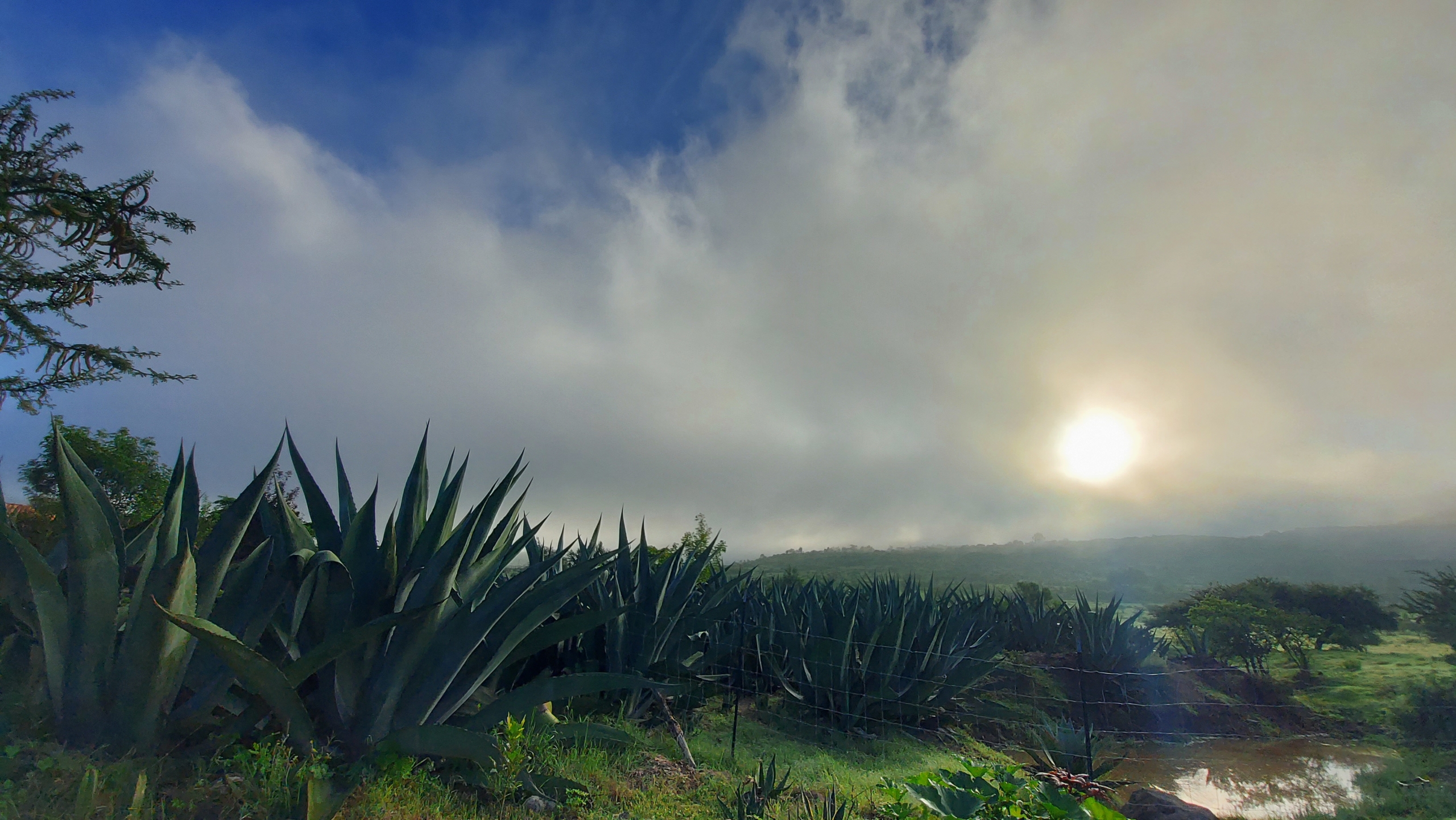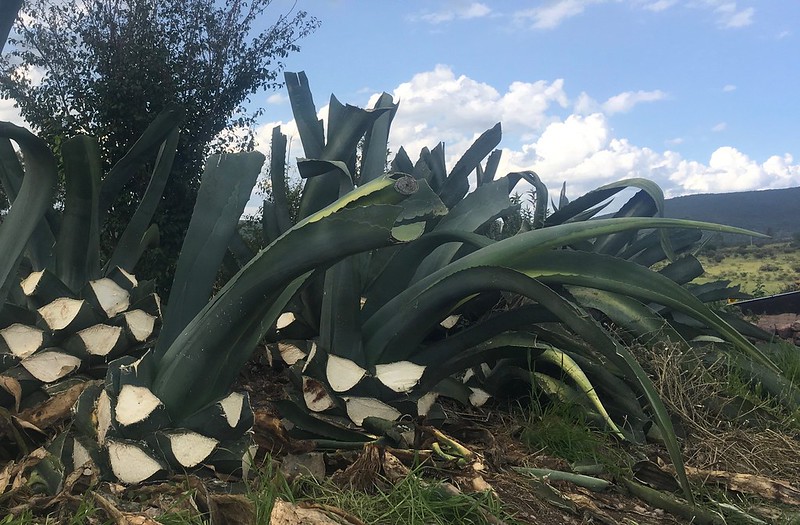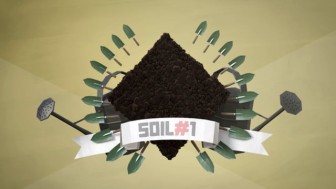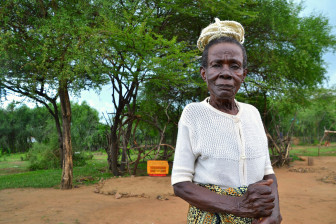What is the Project About?
The Billion Agave Project is a game-changing ecosystem-regeneration strategy recently adopted by several innovative Mexican farms in the high-desert region of Guanajuato.
This strategy combines the growing of agave plants and nitrogen-fixing companion treespecies (such as mesquite), with holistic rotational grazing of livestock. The result is a high-biomass, high forage-yielding system that works well even on degraded, semi-arid lands. A manifesto on mesquite is available in English and Español.
The system produces large amounts of agave leaf and root stem—up to one ton of biomass over the 8-10-year life of the plant. When chopped and fermented in closed containers, this plant material produces an excellent, inexpensive (two cents per pound) animal fodder. This agroforestry system reduces the pressure to overgraze brittle rangelands and improves soil health and water retention, while drawing down and storing massive amounts of atmospheric CO2.
The goal of the Billion Agave campaign is to plant one billion agaves globally to draw down and store one billion tons of climate-destabilizing CO2. The campaign will be funded by donations and public and private investments.
Why Agave?

Climate-Change Solution
Agave plants and nitrogen-fixing trees, densely intercropped and cultivated together, have the capacity to draw down and sequester massive amounts of atmospheric CO2. They also produce more above-ground and below-ground biomass (and animal fodder) on a continuous year-to-year basis than any other desert or semi-desert species. Agaves alone can draw down and store above ground the dry-weight equivalent of 30-60 tons of CO2 per hectare (12-24 tons per acre) per year.
Ideal for arid and hot climates, agaves and their companion trees, once established, require no irrigation, and are basically impervious to rising global temperatures and drought.
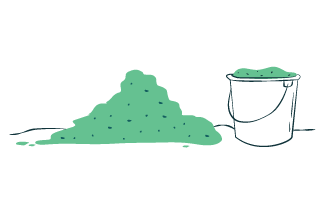
Livestock Feed Source
Agave leaves, full of saponins and lectins, are indigestible for livestock. However, once their massive leaves (high in sugar) are chopped finely via a machine and fermented in closed containers for 30 days, the end product provides a nutritious but very inexpensive silage or animal fodder. This agave/companion tree silage, combined with the restoration of degraded rangelands, can make the difference between survival and grinding poverty for millions of the world’s small farmers and herders.
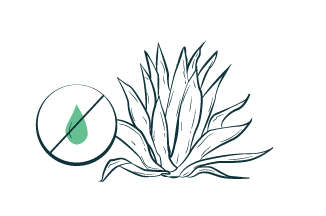
Drought-Resistant
Agaves require little-to-no irrigation. They thrive even in dry, degraded lands unsuitable for crop production because of their Crassulacean Acid Metabolism (CAM) photosynthetic pathway.
The CAM pathway enables agave plants to draw down moisture from the air, and store it in their thick leaves at night. During daylight hours, the opening in their leaves (the stomata) closes up, drastically reducing evaporation.
A New Agroforestry Model
A pioneering group of Mexican farmers are transforming their landscape and their livelihoods. How? By densely planting (1600-2500 per hectare), pruning, and intercropping a fast-growing, high-biomass, high forage-yielding species of agaves among pre-existing (500 per hectare) deep-rooted, nitrogen-fixing tree species (such as mesquite), or among planted tree seedlings.
When the agaves are 3 years old, and for the following 5 - 7 years, farmers can prune the leaves or pencas, chop them up finely with a machine, and then ferment the agave in closed containers for 30 days, ideally combining the agave leaves with 20% of leguminous pods and branches by volume to give them a higher protein level. In Guanajuato, mesquite trees start to produce pods that can be harvested in 5 years. By year 7, the mesquite and agaves have grown into a fairly dense forest. In year 8 - 10, the root stem or pina (weighing between 100-200 pounds) of the agave is ready for harvesting to produce a distilled liquor called mescal. Meanwhile the hijuelos (or pups) put out by the mother agave plants are being continuously transplanted back into the agroforestry system, guaranteeing continuous biomass growth (and carbon storage).
In this agroforesty, system farmers avoid overgrazing by integrating rotational grazing of their livestock across their rangelands. They feed their animals by supplementing pasture forage with fermented agave silage.
Latest News
视频:让我们来谈谈土壤
这个动画片讲述土壤资源的现实世界各地,覆盖退化,城市化,掠夺土地和过度的问题;这部电影提供了选项,使我们管理的土壤更可持续的方式。
Climate Change, Healthy Soils, and Holistic Grazing… A Restoration Story
By restoring grasslands through Holistic Planned Grazing we have the potential to sequester carbon, restore agricultural productivity, increase soil water retention, and enhance wildlife habitat – while also supplying high-quality protein for millions and providing jobs for thousands of people in rural communities.
فيديو: دعونا نتحدث عن التربة
هذا فيلم رسوم متحركة يحكي واقع موارد التربة في جميع أنحاء العالم، والتي تغطي قضايا تدهور، والتحضر، والاستيلاء الأراضي والاستغلال المفرط؛ الفيلم يقدم خيارات لجعل الطريقة التي ندير التربة لدينا أكثر استدامةعلى
Farmers’ Use of Cover Crops Could Benefit the Pheasant Population
Kelly Griffeth, a farmer in Mitchell and Jewell counties, is a believer in cover crops. “We’re using cover crops about everywhere we farm,” Griffeth said. “It’s making us money by improving our soil, and we have tons of wildlife, too.”
Video: parliamo di terreno
Questo film d’animazione racconta la realtà delle risorse del suolo in tutto il mondo, che copre i problemi di degrado, l’urbanizzazione, land grabbing e sfruttamento eccessivo; il film offre opzioni per rendere il modo in cui gestiamo i nostri terreni più sostenibili.
Fertile Health: Parallels Between Sustainable Agriculture and Sustainable Medicine
We can draw many of the solutions for taking care of our inner landscape and growing healthy people from seeing how sustainable agriculture takes care of the outer landscape to grow healthy food.
Vídeo: vamos falar sobre o solo
Este filme de animação conta a realidade dos recursos do solo ao redor do mundo, abrangendo as questões da degradação, a urbanização, a grilagem de terras e exploração excessiva; o filme oferece opções para fazer o modo de gerir os solos mais sustentável.
Video: lassen Sie uns darüber reden Boden
Dieser Animationsfilm erzählt die Realität der Bodenressourcen in der ganzen Welt und deckt die Probleme der Verschlechterung, Verstädterung, Landraub und Übernutzung; Der Film bietet Optionen, um die Art und Weise wir mit unseren Böden nachhaltiger zu gestalten.
The Healing Power of Regenerative Organic Agriculture
September 20, 2015 marked 25 years since my father, Robert Rodale, was killed in a car accident in Russia. If on that fateful day someone would have asked him what his legacy was to be, I know for a fact he would have answered: “Regenerative organic agriculture.”
Don’t be fooled! Civil society says NO to “Climate Smart Agriculture” and urges decision-makers to support agroecology
We face a critical moment. Real solutions to climate change must be agreed upon and urgently adopted. A coalition of over 350 organizations from around the world urges decision-makers to stand against green-washed false solutions rebranded as Climate Smart Agriculture (CSA), and to have the courage to recognise and promote the decisive role of agroecology in ensuring food and nutrition security, the full realization of the human right to adequate food and nutrition, and food sovereignty in the face of climate change, resource scarcity, and growing demand challenges.
